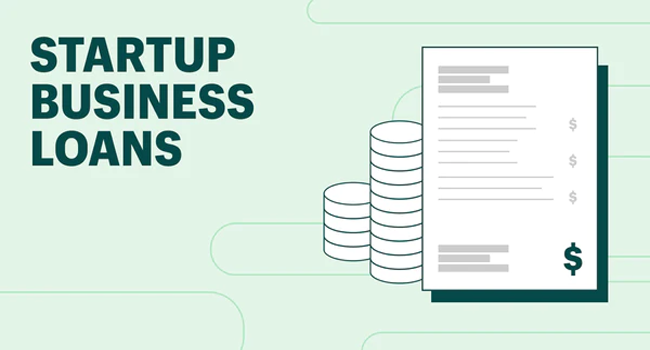Starting SaaS Business can be one of the most rewarding ventures in the modern digital economy. With the increasing reliance on cloud-based software solutions, the demand for Software as a Service (SaaS) platforms continues to grow exponentially. However, transforming a promising SaaS idea into a successful business requires more than just a strong concept and technical expertise. It necessitates significant financial investment, and this is where startup business loans come into play.
The Essence of a SaaS Business
A SaaS business offers software applications over the internet, which users can access through a subscription model. This approach eliminates the need for customers to purchase and install software on their devices, providing benefits such as reduced upfront costs, easy scalability, and remote accessibility. For entrepreneurs, starting a SaaS business involves several critical steps: identifying a market need, developing the software, launching the product, and scaling the operations. Each of these steps requires careful planning and sufficient capital.
The Crucial Role of Startup Business Loans
Startup business loans are essential for covering the various expenses associated with launching a SaaS business. These loans can finance software development, marketing efforts, hiring skilled employees, and other operational costs. By securing a startup business loan, entrepreneurs can focus on building a robust product and scaling their operations without the constant stress of financial constraints.
Types of Startup Business Loans Available
There are several types of startup business loans that SaaS entrepreneurs can consider:
-
SBA Loans: The U.S. Small Business Administration (SBA) offers various loan programs designed to support small businesses. SBA loans typically have favorable terms and lower interest rates, making them an attractive option for startups. However, the application process can be rigorous and may require a solid business plan and good credit history.
-
Term Loans: Traditional term loans from banks or online lenders provide a lump sum of capital that is repaid over a set period with interest. These loans are suitable for covering significant one-time expenses, such as software development or a major marketing push.
-
Business Lines of Credit: A business line of credit offers flexible financing, allowing startups to borrow up to a certain limit and only pay interest on the amount borrowed. This option is ideal for managing cash flow and covering ongoing operational expenses.
-
Equipment Financing: For SaaS businesses that require specific hardware or software tools, equipment financing can be a practical solution. This type of loan is specifically designed to fund the purchase of equipment, with the purchased items often serving as collateral.
-
Personal Loans: Some entrepreneurs might consider using personal loans to fund their SaaS startup. While this can provide quick access to funds, it also comes with personal risk, as the entrepreneur is personally liable for repaying the loan.

Steps to Secure a Startup Business Loan
Securing a startup business loan involves several preparatory steps to increase the likelihood of approval:
-
Develop a Comprehensive Business Plan: Lenders want to see a detailed business plan that outlines the SaaS product, target market, competitive landscape, revenue model, and growth strategy. A well-thought-out plan demonstrates the entrepreneur’s understanding of the market and their strategy for success.
-
Prepare Financial Projections: Financial projections that show expected revenue, expenses, and profitability over the next few years are crucial. These projections help lenders assess the financial viability of the business and the entrepreneur’s ability to repay the loan.
-
Improve Credit Score: A good credit score increases the chances of loan approval and can lead to better loan terms. Entrepreneurs should take steps to improve their credit score, such as paying down existing debts and resolving any credit report errors.
-
Gather Necessary Documentation: Lenders require various documents during the loan application process, including personal and business financial statements, tax returns, and legal documents. Having these documents ready can expedite the application process.
-
Explore Multiple Lenders: Entrepreneurs should explore loan options from multiple lenders, including traditional banks, online lenders, and credit unions. Comparing loan terms, interest rates, and repayment conditions can help find the best financing option.
Strategically Using Startup Business Loans
Once a startup business loan is secured, it’s crucial to use the funds strategically to maximize the chances of success:
-
Invest in Product Development: One of the primary uses of startup business loans should be product development. Ensuring that the SaaS product is robust, scalable, and user-friendly is vital for attracting and retaining customers.
-
Allocate Funds for Marketing: Effective marketing is essential for gaining visibility in a competitive market. Allocating funds for digital marketing campaigns, content creation, and social media marketing can drive customer acquisition.
-
Build a Talented Team: Hiring skilled employees is crucial for developing and supporting the SaaS product. Startup business loans can help cover salaries and benefits for top talent, which is essential for business growth.
-
Enhance Customer Support: Providing excellent customer support can differentiate a SaaS business from competitors. Investing in customer support infrastructure and training ensures that customers have a positive experience and remain loyal.
-
Monitor Cash Flow: Effective cash flow management is critical for the sustainability of a SaaS business. Entrepreneurs should regularly monitor cash flow to ensure that they can meet operational expenses and loan repayment obligations.
The Long-Term Impact of Startup Business Loans
Startup business loans not only provide the necessary capital to launch a SaaS business but also play a significant role in long-term growth. By strategically investing the loan funds, entrepreneurs can develop a competitive product, establish a strong market presence, and build a loyal customer base. Over time, the initial investment can lead to increased revenue, profitability, and business expansion.
Furthermore, successfully repaying a startup business loan can improve the business’s credit profile, making it easier to secure additional financing in the future. This can be particularly beneficial for scaling the business, launching new products, or entering new markets.
Conclusion
Starting a SaaS business offers tremendous potential in today’s technology-driven world. However, turning a SaaS concept into a thriving business requires substantial financial investment. Startup business loans provide the necessary funding to cover the various expenses involved in launching and growing a SaaS business. By carefully selecting the right type of loan and strategically using the funds, entrepreneurs can overcome financial challenges and pave the way for long-term success. With a solid business plan, careful financial management, and a focus on delivering value to customers, SaaS entrepreneurs can navigate the path to success with the support of startup business loans.






